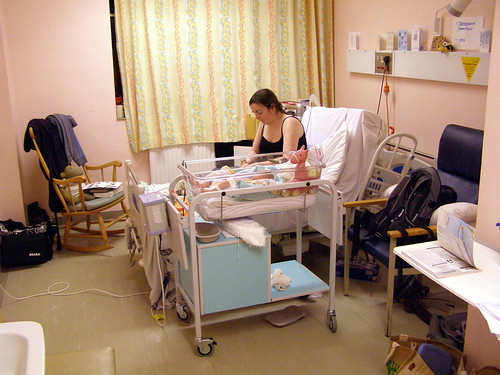For many nurses, patient contact is a part of every shift. However, according to the American Nurses Association, some hospital personnel members are at risk for ending their career due to injuries related to back and shoulder strains. In comparison to other occupations, nursing is one of the ten most likely professions to cause musculoskeletal disorders, or MSDs.
Although MSDs aren’t responsible for all types of workplace injuries, a 2012 presentation from the Alabama Department of Health cautioned that back injuries related to patient handling are the top concern for healthcare employees.
Devices to Replace Human Strength
To compensate, some hospitals around the world have adopted “no-lift” policies. In these environments, nurses use a range of specialized equipment and electronic devices to help them avoid bearing the full weight of a patient.
A company called Stryker has a full line of BackSmart products. The items aim to help nurses safely accomplish repetitive tasks such as transferring patients from the exam table to a hospital bed, or moving them to a different room. Some products have a 1000-pound weight capacity, making them suitable for very large patients.
A Technique to Try Now
Although innovative devices are very appealing, the cost makes it hard for some hospitals to begin using them right away. With that in mind, a publication called Advance for Nurses published a few simple, yet effective ways for nurses to practice their job in a way that meets patient needs without sacrificing safety. You can try one of them without any special equipment.
If your patient is coherent, try to keep them involved. Verbally tell them to prepare for a move, and invite them to bear some of their own weight, if possible. Sometimes, simply counting to three or using another sort of verbal command can help you work as a team so your patient can be moved safely, without putting you at risk for hurting your body.
Get Help From Coworkers
Working collaboratively goes a long way in the nursing world, and that’s especially true
when it comes to patient movement tasks. Some hospitals keep certain types of patients, such as paralysis victims, together in the same ward. If you’re constantly working with patients who need help moving, you might feel more confident about vocalizing your needs to other nurses on your floor.
Once you get assistance, be clear about the kind of help you need, and how it relates to the patient’s limitations. This will help your partner immediately understand how to offer assistance in a relevant way.
Stay Informed
An organization called the Work Injured Nurses Group aims to reach out to the healthcare industry and provide education about lifting injuries on a single website. If you’re interested in what other states are doing to combat this problem, it’s worth signing up for their e-mail list. Although the website is very text-heavy, it offers a resource that looks beyond national initiatives. The information there could be helpful if you’re eager to help your workplace adopt new methods to keep staff members safer.
Many people decide to become nurses because they’re inspired to dedicate their lives to helping others. However, keep in mind that this desire should never outweigh personal safety. By altering your methods, you can achieve patient care goals and avoid injuries, too.
– Eryn Greene is an avid health blogger. Are you a nurse interested in teaching others? You may consider getting your MSN. Many schools offer MSN programs, including University of San Francisco.



